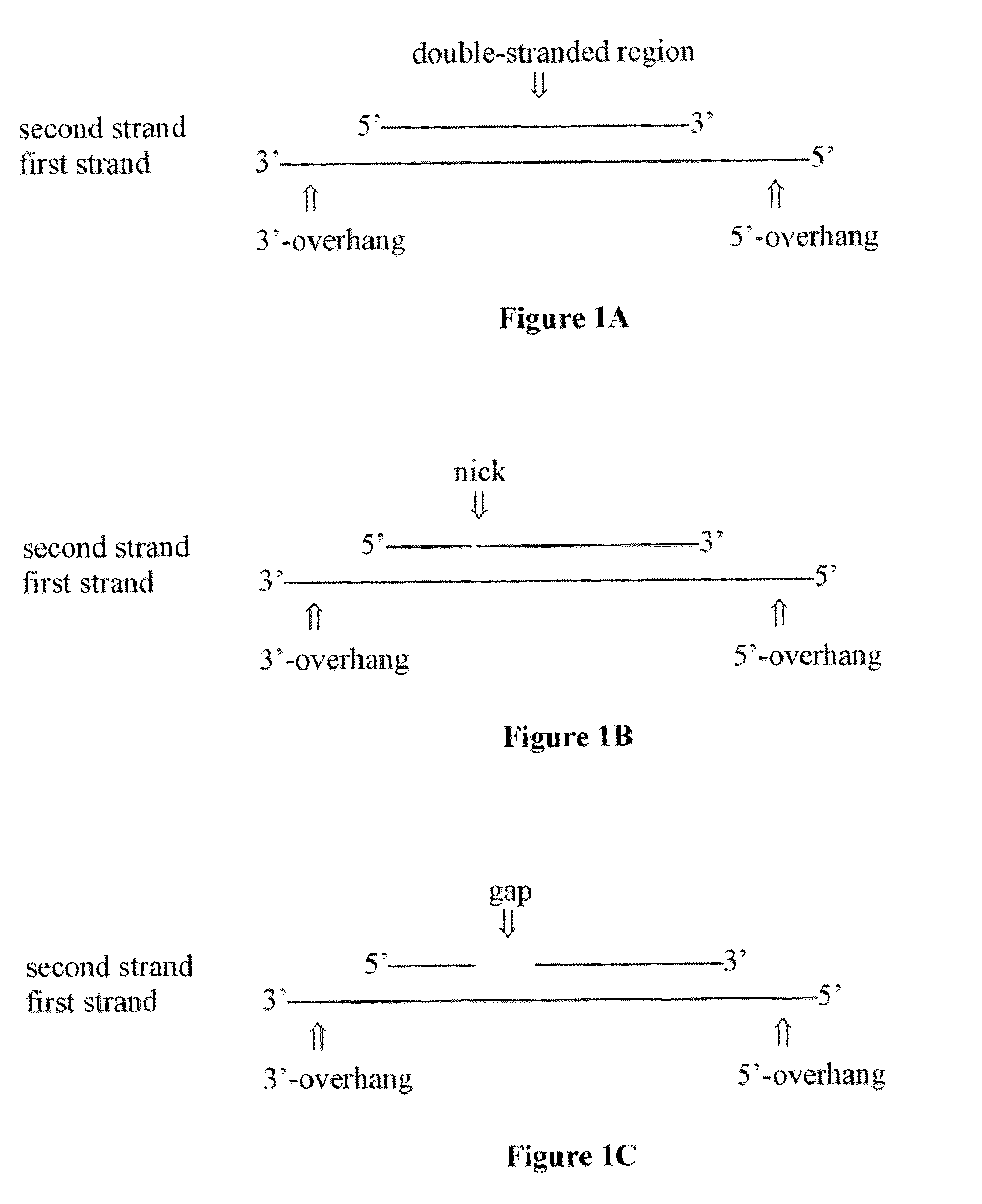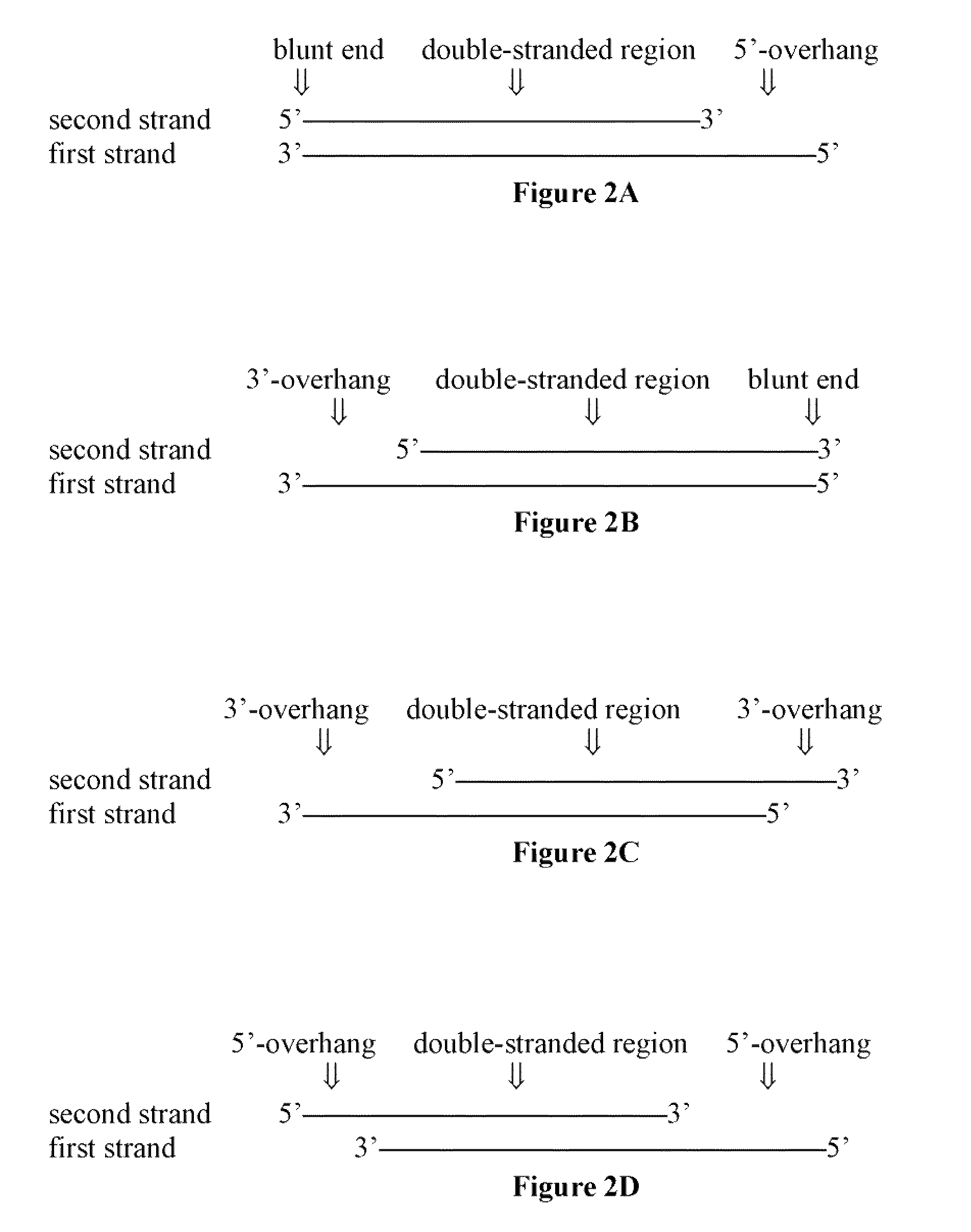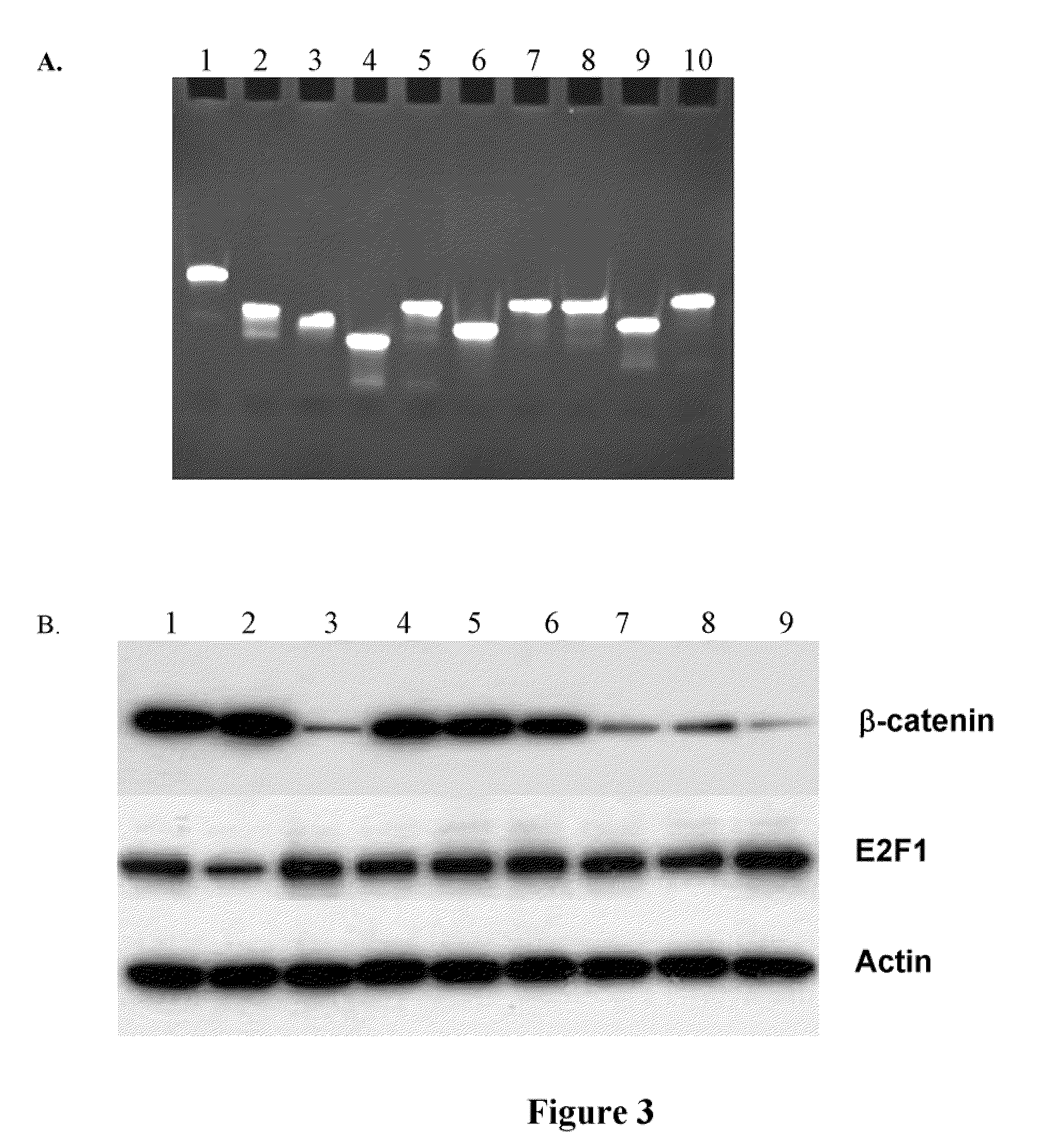Compositions of asymmetric interfering RNA and uses thereof
a technology of rna and rna fragment, which is applied in the direction of dna/rna fragmentation, liposomal delivery, and vector-based foreign material introduction, etc., can solve the problems of limited efficacy of based drugs, prohibitive or high cost associated with sirna synthesis, and high cost of manufacture of these molecules, so as to reduce the cost of synthesis, reduce the length, and achieve the effect of potent gene silencing
- Summary
- Abstract
- Description
- Claims
- Application Information
AI Technical Summary
Benefits of technology
Problems solved by technology
Method used
Image
Examples
example 1
Asymmetric Interfering RNA (aiRNA) Causes Gene-Specific Silencing in Mammalian Cells
[0285]The siRNA structural scaffold is considered the essential configuration for incorporating into RISC and mediating RNAi (Elbashir et al., 2001a; Elbashir et al., 2001b; Elbashir et al., 2001c; Rana, 2007; Zamore et al., 2000). However, very little is known about RNA duplex scaffold requirements for RISC incorporation and gene silencing. To investigate the structural scaffold requirements for an efficient RNAi mediator and RISC substrate, we first determined if RNA duplexes shorter than siRNAs could mediate gene silencing. The length of double stranded (ds) RNA is an important determinant of its propensity in activating protein kinase R (PKR)-mediated non-specific interferon responses, increased synthesis cost, and delivery challenges (Elbashir et al., 2001b; Sledz et al., 2003). We designed a series of short dsRNAs ranging from 12 to 21 bp with 2 nucleotide 3′ overhangs or blunt ends targeting d...
example 2
Mechanism of Gene Silencing Triggered by aiRNA
[0297]To investigated the mechanism of gene knockdown induced by aiRNA, we first determined if the gene silencing by aiRNA occurs at translational or mRNA level. Northern blot analysis of β-catenin in cells transfected with 10 nM of the 15 bp aiRNA showed that the aiRNA reduced mRNA levels by over 95% within 24 hours and the decrease lasted more than 4 days (FIG. 6a), suggesting that aiRNA mediates gene silencing at the mRNA level. The reduction of β-catenin mRNA induced by aiRNA was substantially more rapid, efficacious and durable than by siRNA (FIG. 6a). We further determined if the 15 bp aiRNA catalyzed the site-specific cleavage of β-catenin mRNA. Total RNA isolated from cells transfected with the 15 bp aiRNA was examined by rapid amplification of cDNA ends (5′-RACE) and PCR for the presence of the β-catenin mRNA cleavage fragments (FIG. 6b). We detected β-catenin cleavage fragments at 4 and 8 hours following aiRNA transfection (FIG...
example 3
aiRNA Mediates a More Rapid Potent, Efficacious, and Durable Gene Silencing than siRNA
[0304]To compare aiRNA with siRNA in gene silencing properties, we first determined the optimal aiRNA structure for gene silencing.
[0305]The siRNA duplex contains a symmetrical sense strand and an antisense strand. While the duplex siRNA structure containing a 3′ overhang is required for incorporation into the RISC complex, following Argonaute (Ago) mediated cleavage of the sense strand, the antisense strand directs cleavage of the target mRNA (Hammond et al., 2001; Matranga et al., 2005; Tabara et al., 1999). We sought to make asymmetric RNA duplexes of various lengths with overhangs at the 3′ and 5′ ends of the antisense strand. We designed one set of such asymmetrical RNA duplexes of 12 to 15 bp with 3′ and 5′ antisense overhangs to target β-catenin (FIG. 1 IA), an endogenous gene implicated in cancer and stem cells (Clevers, 2006). An optimized siRNA of the standard configuration has been desig...
PUM
| Property | Measurement | Unit |
|---|---|---|
| quantitative real time PCR | aaaaa | aaaaa |
| pH | aaaaa | aaaaa |
| pH | aaaaa | aaaaa |
Abstract
Description
Claims
Application Information
 Login to View More
Login to View More - R&D
- Intellectual Property
- Life Sciences
- Materials
- Tech Scout
- Unparalleled Data Quality
- Higher Quality Content
- 60% Fewer Hallucinations
Browse by: Latest US Patents, China's latest patents, Technical Efficacy Thesaurus, Application Domain, Technology Topic, Popular Technical Reports.
© 2025 PatSnap. All rights reserved.Legal|Privacy policy|Modern Slavery Act Transparency Statement|Sitemap|About US| Contact US: help@patsnap.com



